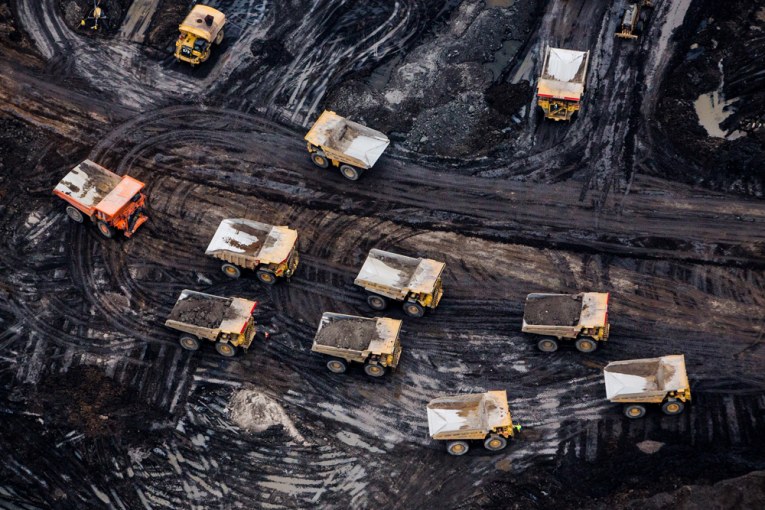
CALGARY – Regulators have recommended the federal government approve Teck Resources Ltd.’s massive new oilsands mine that could help reverse a trend of declining investment in the heavy oil formation, though analysts have been skeptical new mining projects can ever be built in the play given emissions limits and stringent regulatory reviews.
The Canadian Environmental Assessment Agency and the Alberta Energy Regulator announced late Thursday they were recommending Environment and Climate Change Minister Catherine McKenna approve Frontier, a massive new oilsands mining project by the Vancouver-based miner, with the capacity to produce 85,000 barrels of oil per day by 2026, with future phases taking total output to 260,000 bpd by 2037.
While the two agencies determined the project was in the public interest, they also withheld approvals for parts of the project on Big Creek, a waterway in the area, and made its approval contingent on 62 different conditions.
A statement from McKenna’s office said that if the minister decides the new oilsands mine will result in significant adverse environmental impacts, then she would refer a decision on the project to the wider Liberal cabinet.
That could be a likely outcome given the CEAA and AER joint-review panel recommended the project be approved despite finding “there will be significant adverse project and cumulative effects on certain environmental components and indigenous communities.”
The environmental think tank Pembina Institute pointed out in a release the mine would contribute six metric tonnes of new carbon emissions annually in Alberta, where current emissions sit at 80Mt and there is an existing 100Mt emissions cap in the oilsands, though United Conservative Party Premier Jason Kenney campaigned on scrapping that cap imposed by former NDP premier Rachel Notley.
“We asked the panel to ensure regulations are in place to credibly enforce the 100 Mt limit before another project puts a shovel in the ground,” Pembina Institute’s Alberta director Duncan Kenyon said in a note.
The project is large by any measure and analysts have speculated that Teck, which has a market cap of $15.7 billion, could seek other partners on the estimated $20.6-billion Frontier mine, — the first greenfield mining project to break ground in Canada since the oil price collapse of 2014 and subsequent long decline in investment in the sector.
Teck was recently a joint-venture partner alongside Suncor Energy Inc. and Paris-based Total SA on the $17-billion Fort Hills oilsands mine, which started last year but had received the green light well before the oil price decline of 2014.
At the time, Fort Hills was speculated to be the last greenfield oilsands mining project built in the play.
“Any further decisions on the project will depend on factors including our review of the Joint Review Panel report, the outcome of the regulatory process, which is not expected to be completed until the first quarter of 2020, market conditions, and other considerations,” Teck spokesperson Chris Stannell said in an email.
“They learned a lot from Fort Hills,”
Kevin Birn, IHS Markit vice-president
If Teck proceeds with the Frontier mine, it would provide new data on how far capital costs have been reduced in the oilsands mining business since the oil price collapse, said IHS Markit vice-president Kevin Birn, noting that he expects to see lower capital cost figures.
“They learned a lot from Fort Hills,” said Birn, who authored a report for IHS Markit in April showing that capital costs in oilsands mining have declined 35 per cent. Now, a greenfield oilsands mine can provide a return at US$65 per barrel West Texas Intermediate oil prices, compared with US$100 per barrel in 2014.
In addition, he said the macro economic outlook for heavy oil demand – and the oilsands in particular — has improved since 2014 as traditional sources of heavy oil such as Venezuela and Mexico have seen production declines, the Canadian dollar has deflated relative to the U.S., and the value of oilsands input costs such as natural gas has fallen.
As a result, Birn expects to see additional oilsands production from mining projects, though it’s still unclear if any company will undertake the risk of building a greenfield mine.
“Will mining output increase over time? I think so,” he said.
Last week, the AER also approved an extension of the Mildred Lake oilsands mine, operated by Syncrude Canada Ltd., to replace the declining reserves of the company’s current North Mine, which may be depleted by the mid-2020. The extension project, consisting of two new open pit mining areas, would extend the life of the Mildred Lake mine by 14 years.
Syncrude, a joint venture led by Suncor and Imperial Oil Ltd., is one of the original oilsands mining operations in the area and is not looking to expand its production within the project.
• Email:
You can read more of the news on source
